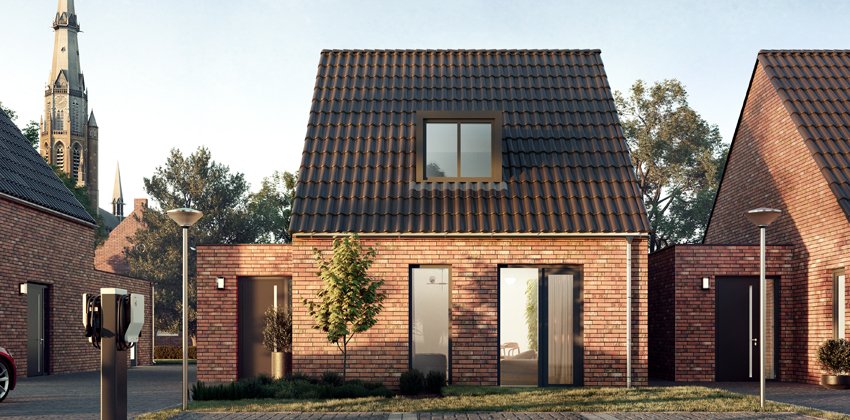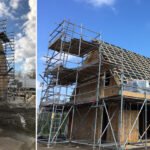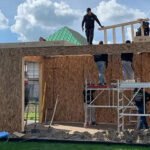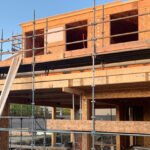
Why SIPs Are Ideal for Affordable Family Homes
Across Europe, families are struggling to find affordable homes that meet modern standards of comfort, efficiency, and sustainability. Rising housing costs, strict building codes, and limited availability of skilled labor have made traditional construction methods increasingly impractical.
Structural Insulated Panels (SIPs) offer a solution. By combining structure, insulation, and airtightness into a single prefabricated element, SIPs make it possible to deliver homes that are affordable to build, affordable to live in, and durable enough to last for generations. This blog explores why SIPs are ideally suited for family housing across Europe.
The Challenge of Affordable Housing
Family homes are the backbone of every community, yet affordability is under threat:
- High Land and Labor Costs: In many cities, the cost of construction has risen by more than 20% in recent years.
- Energy Bills: Families are facing unprecedented utility costs, making energy-efficient homes more valuable than ever.
- Maintenance Costs: Traditional homes often require frequent repairs and upgrades.
- Regulatory Pressure: New homes must comply with strict energy codes such as nZEB, BENG, or RE2020.
To remain affordable, housing must be designed to reduce costs not just at the point of construction, but over its entire lifecycle. SIPs achieve exactly this.
Cost Efficiency in Construction
One of the biggest drivers of affordability is reduced build cost. SIPs contribute to cost efficiency in multiple ways:
- Faster Assembly: Family homes can be erected in a matter of days, cutting labor costs significantly.
- Smaller Crews: Fewer workers are needed, reducing dependency on scarce skilled labor.
- Predictable Budgets: Prefabrication ensures fewer on-site errors and material waste, improving cost control.
- Shorter Financing Periods: Faster builds mean lower interest costs on loans and quicker returns for developers.
For families and developers alike, faster and more predictable builds translate directly into affordability.
Energy Savings for Families
Building affordable homes is only half the equation—living in them must also remain affordable. SIPs deliver exceptional energy performance that keeps bills low.
- Superior Insulation: Neopor® SIP cores provide up to 20% better insulation than standard EPS.
- Airtight Construction: Reduced drafts and leaks keep indoor climates stable year-round.
- Smaller HVAC Systems: Lower heating and cooling demands allow for smaller, cheaper systems.
- Lifetime Savings: Families can save thousands of euros over the lifespan of a SIP home through lower utility costs.
For families living paycheck to paycheck, these savings make a real difference in household budgets.
Durability and Low Maintenance
Affordable housing should not mean lower quality. In fact, durability is one of the best ways to ensure long-term affordability. SIPs excel here:
- Structural Stability: SIPs resist warping, settling, and cracking.
- Moisture Resistance: With proper cladding, SIPs prevent mold and dampness.
- Pest Resistance: Fewer cavities reduce the risk of infestations.
- Minimal Upkeep: Unlike traditional homes that require frequent repairs, SIPs provide decades of reliable performance.
Families benefit from homes that remain safe, healthy, and comfortable without the burden of high maintenance costs.
Flexibility for Family Needs
Family housing must be adaptable to different lifestyles, cultures, and budgets. SIPs support this flexibility:
- Design Variety: From compact starter homes to larger family houses, SIPs accommodate diverse needs.
- Cladding Options: Homes can be finished in brick, timber, render, or modern composites to match local styles.
- Expansion Potential: SIP homes can be extended with additional modules, supporting growing families.
- Interior Comfort: Open-plan layouts and high ceilings create spacious, modern living environments.
This versatility makes SIPs suitable for both urban and rural family housing projects.
Case Examples
- The Netherlands: SIP social housing developments delivered affordable family homes that met BENG standards, reducing utility costs for residents.
- Belgium: SIP townhouses provided modern, energy-efficient family housing in dense urban neighborhoods.
- Spain: Eco-village family homes built with SIPs combined affordability with sustainable living.
- France: Suburban SIP housing developments offered families energy-efficient homes at competitive prices while meeting RE2020 standards.
These cases demonstrate that SIPs are not just affordable in theory—they deliver practical results in real markets.
Addressing Misconceptions
Some skeptics argue that prefabricated homes are not suitable for families. SIPs prove otherwise:
- “Prefab Looks Cheap”: With multiple finishing options, SIP homes can match or surpass traditional aesthetics.
- “Affordable Means Low Quality”: SIPs are built to last decades, with superior insulation and durability.
- “Limited Flexibility”: SIPs allow for custom designs, open layouts, and architectural freedom.
The truth is that SIPs make affordability and quality compatible, breaking the stereotype of low-cost housing.
The Role of Quacent
Quacent supports affordable housing initiatives with:
- Ready-To-Assemble SIP Kits: Panels packaged by construction phase for easy installation.
- Technical Support: Design assistance, BIM models, and training for contractors.
- Sustainability Documentation: EPDs and LCAs to support funding and compliance.
- Scalable Solutions: From single-family homes to multi-unit developments.
By combining global expertise with local partnerships, Quacent makes SIP technology accessible for affordable housing projects across Europe.
Looking Ahead
As housing demand grows, affordability will remain a top priority for policymakers, developers, and families. SIPs are set to play a central role in:
- Social Housing Programs: Faster, cost-effective solutions for municipalities.
- Private Developments: Attractive homes with lower lifetime costs for families.
- Sustainable Communities: Affordable homes that support energy and climate goals.
- Future-Proofing: Homes ready for rising energy costs and stricter regulations.
By 2030, SIPs could become a standard solution for delivering family housing across Europe.
Conclusion
Affordable housing must be more than low-cost—it must also be durable, efficient, and comfortable for generations. SIPs make this possible by reducing construction costs, lowering energy bills, and delivering long-lasting performance.
For families, this means homes that are truly affordable to own and to live in. For developers and policymakers, it means a scalable solution to Europe’s housing crisis.
SIPs are not only ideal for affordable family housing—they may well be the most practical path forward.





Add a comment